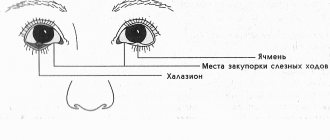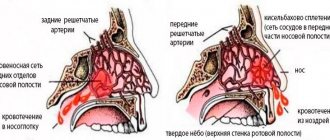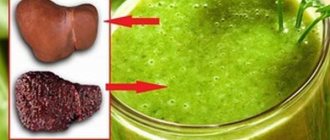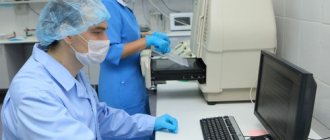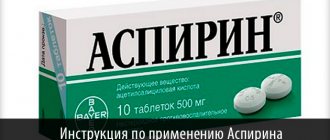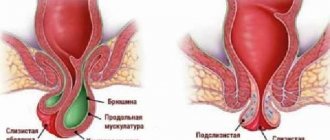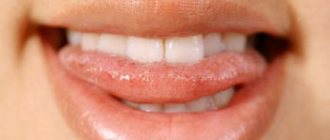Often, drug addicts come to the doctor and ask him to “clean the blood.” The expression, of course, is not entirely euphonious. It is not even known where and how it came from. Maybe it was invented by fortune tellers and traditional healers? But blood is not shoes that need cleaning. Here you cannot take, for example, a sponge and use it to cleanse the blood of drugs.
In this case, we mean a set of procedures that doctors call extracorporeal detoxification to cleanse the body. As a rule, this group includes liquor absorption, plasmapheresis and hemosorption. What clever names. What is hidden under them?
NARCOLOGY
1. Liquor absorption
. Cerebrospinal fluid (CSF) is filtered through some sorbent, for example, processed coal particles.
2. Plasmapheresis
. Blood is divided into plasma and formed elements. The first is saturated with proteins, it does not contain red blood cells or leukocytes. Therefore, the drug addict’s blood cells are poured back into the bloodstream, but the plasma is poured out. Instead, a sterile solution is added to the blood cells.
3. Hemosorption
. The blood is purified by a sorbent.
To prevent blood from clotting on the sorbent or in the pumping apparatus, it is heavily filled with heparin. It is worth noting that this substance does not allow blood to clot not only outside the body, but also in blood vessels. The cerebrospinal fluid and blood, purified with the help of a sorbent, return to their usual places, that is, the red liquid back into the vein, and the cerebrospinal fluid into the spinal cavity.
These three procedures last at least half an hour. It is clear that when they are carried out, the surface of the skin is injured. But with liquor absorption, even the bone shell of the dorsal vertebrae is disrupted. Thus, once there is a disturbance in the internal environment of the body, it means we can talk about surgical intervention, which, in turn, implies possible complications.
What is blood and why is it needed?
An adult's body contains from 4 to 6 liters of blood. It constantly circulates throughout the body and carries oxygen and nutrients - this is its main task. In addition, nutritious proteins, fats and carbohydrates travel along with the blood, which cells use to obtain energy and build new proteins; and signaling substances - for example, hormones that tell the body how to behave in different situations. An important part of the blood consists of elements of the immune system: antibodies that recognize poisons and viruses, and cells that destroy everything that the body considers harmful. Normally, blood is an extremely useful part of the body, but it remains so only as long as there is a healthy balance of components in it and no harmful agents. Pathogenic and toxic substances can come either from the environment (viruses, heavy metal salts and other poisons) or be formed directly in the human body (autoantibodies, circulating immune complexes, etc.).
From ancient times until recently, sick blood was “poured” out of the body; bloodletting is still used in medicine, but only in healthy people as a donation to obtain whole blood, with subsequent isolation of components. The discovery of red blood cells and other components of blood, as well as progress in the field of biochemistry, physiology and immunology in the last hundred years, has made it possible not only to “drain” diseased blood, but to purify it and return it to the body healthy. This process refers to extracorporeal (that is, occurring outside the body) methods of treatment (EML), or in other words, methods of therapeutic apheresis (removal). There are a lot of them, and they help fight many diseases - from allergies to cancer. EMLs allow you to remove allergens, fractions of “bad” cholesterol, toxins, pathogenic antibodies and other substances that interfere with the normal functioning of the body from the circulatory system.
Blood purification
Drug addicts believe that purifying the blood and cerebrospinal fluid will rid their body of dangerous toxins. They are formed as a result of regular drug use. Toxins negatively affect the internal organs of the addict. Therefore, removing them will benefit the health of the addict.
If the addict has recently used a drug, then with the help of a sorbent it can be collected and removed from the body. Only the absence of the drug in the blood will cause withdrawal symptoms in a drug addict, which only specialists can cope with. But even if you look at it from the other side, withdrawal will still begin sooner or later. Just not right away, but after 13-15 hours. After the onset of withdrawal, there is no point in doing hemosorption, because the drug has already left the blood. And immediately after taking the dose, the addict will not perform this medical procedure. Why should he deprive himself of drug euphoria? Then what is the blood purified from? Maybe you don't need to do anything. After all, the patient is exposed to a certain risk, since the blood is saturated with heparin (an anti-clotting drug). And the skin is injured.
Therapeutic plasmapheresis: indications and contraindications
The belief that every person absolutely needs to cleanse their blood and blood vessels by any means is formed by advertising and false doctors. The suggestion sent people to clean the blood without thinking about the possible consequences. As a result, serious health problems arose. It must be remembered that a healthy body sets up its own cleansing and excretory system. He should be helped after consulting a doctor in cases of decreased immunity, illness, or intoxication. Indications for purification through a membrane blood filter are the following diseases:
- dermatological;
- endocrinological;
- gynecological;
- drug treatment;
- rheumatological and others.
In the absence of effective results in treatment, passing the blood through a kind of filter allows toxins to be removed along with the plasma, reducing the load on other excretory organs. Blood fluidity increases and the immune system improves. The body rejuvenates. Reviews from patients after using the plasmapheresis procedure confirm that with alcohol and other intoxications, the rate of recovery of the body sharply increases.
Contraindications are associated with the presence of chronic and acute diseases:
- anemia;
- severe liver disease;
- oncology;
- exacerbation of peptic ulcer;
- acute diseases of the cardiovascular system;
- bleeding.
Preparation begins with a doctor’s consultation and examination. Ignoring contraindications is life-threatening.
How does the blood purification procedure work?
Modern and safe methods make it possible to purify blood plasma painlessly and without a hospital stay; the price of the procedure will depend on the chosen method. The modern way is to filter it through a disposable filter membrane.
Using a modern device, a transfusiologist takes 10 ml of blood from a vein. After filtering, it enters the body purified. Instead of the collected plasma, saline solution is injected. Everything happens in less than an hour, the person is comfortable and does not hurt.
Blood plasma purification - recommended in 3-4 approaches over several days. No special preparation is required; the patients’ condition is constantly monitored by specialists.
"Dirty" drugs
Some drug addicts slowly kill themselves with homemade “drugs.” They firmly believe that blood purification procedures will rid them of the dirt contained in underground “dope.” By dirt they mean tiny grains of raw vegetable matter. There is no way to remove them from the “drug” solution in primitive home conditions. By the way, these remaining raw materials make the prepared liquid cloudy and dark. Moreover, it is important for a drug addict that the “dirt” is removed, and let the drug itself remain and “delight” the soul.
Indeed, these small grains end up in the blood when the dose is administered intravenously. Only the veins, capillaries and arteries will not wander forever. Their presence in the blood lasts no more than 3-4 hours. They are then consumed by macrophages - active cells floating in the blood. If macrophages do not completely destroy them, then their remains will settle in those cells that make up the inner walls of the vessels. By the way, all these vessels are mainly located in the liver. And no amount of hemosorption can get them out of the liver.
Today hemosorption has become widespread. This procedure is carried out in many drug treatment clinics. True, not all patients felt noticeable relief after it, but many of them felt better. Or maybe the cleansing had a positive effect because after hemosorption the specialist prescribes a course of painkillers and sleeping pills? Probably, they improve the well-being of a drug addict.
How to cleanse blood - Herbs | Products and more
Do I need a special diet or product to cleanse my blood?
Your blood is responsible for transporting all kinds of substances throughout your body, from oxygen to hormones, clotting factors, sugar, fats, and your immune system cells.
There's really no need to invest in an expensive clean diet or buy tons of detox supplements to help keep your blood clean and free of toxins and waste.
Your liver and your kidneys have already done a great job of cleaning your blood by removing and breaking down waste.
Therefore, your best bet for naturally cleansing your blood is to find ways to help these critical organs function most efficiently.
Read on for a list of the best foods and herbs that will help keep these beautiful organs strong and healthy.
Blood purification
Blood performs three main functions:
- Transport. Blood transports gases such as oxygen and carbon dioxide to the lungs and out of the body. Blood also moves nutrients from the digestive tract to the rest of the body and transports waste, hormones, and other cells.
- Protection. Blood contains white blood cells that destroy invading microorganisms, as well as platelet factors that clot the blood and minimize blood loss due to injury.
- Regulation. Blood helps regulate your body's pH, water balance and temperature.
Your blood has many important responsibilities, so it's no surprise that people are looking for ways to rid their blood of waste and toxins.
Luckily, your body already has a system in place to take care of the detoxification process and remove waste from the blood, namely the liver and kidneys.
- Liver. The liver is located in the upper right side of the abdomen. It helps convert food into energy. It also converts toxins such as alcohol, harmful metals and drugs into harmless substances and ensures their removal from the body.
- Kidneys. The kidneys are two bean-shaped organs that are responsible for filtering blood and removing waste.
Your body's natural detoxification process also involves the intestines, skin, spleen and lymphatic system.
You'll see a lot of unsubstantiated claims about detox supplements that can purify the blood.
Although the ingredients in these supplements may help the blood indirectly by supporting kidney and liver function, there is no evidence that they have a direct effect on removing waste and toxins from the blood.
The Best Natural Detoxification Products
There is no one miracle food that will help your organs detoxify your blood.
An overall healthy diet that includes plenty of fruits and vegetables is a great start.
Specifically, the following foods have been shown to have a positive effect on the liver and kidneys' ability to cleanse and filter waste and toxins from the blood:
Water
Of course, the best way to improve kidney function is to drink enough water.
Your kidneys depend on water to help them eliminate waste from the body.
Water also helps keep your blood vessels open so blood can move freely.
Severe dehydration can cause kidney damage.
Your urine should be light yellow or colorless throughout the day.
According to the National Kidney Association, you should produce about 6 cups of urine per day.
Adequate water intake will be different for everyone.
The general rule is eight glasses of water a day, but you may need more if you engage in strenuous exercise or weigh more.
Men generally need more water than women.
Cruciferous vegetables (broccoli, cabbage, cauliflower, Brussels sprouts)
Cruciferous vegetables are often recommended for people with kidney disease.
They are rich in antioxidants and extremely nutritious.
They can reduce the risk of many types of cancer, including kidney cancer.
Plus, they're incredibly versatile.
You can eat them raw, steamed, baked, grilled, or as part of a soup or casserole.
Blueberry
Blueberries are incredibly rich in antioxidants, which can protect the liver from damage.
You can snack on blueberries fresh or frozen, or mix them into yogurt, oatmeal, or smoothies.
Cranberry
Cranberries are often touted for their urinary tract benefits.
They have been shown to prevent bacteria from attaching to the urinary tract, which in turn protects the kidneys from infection.
To reap the benefits of this fruit, you can simply add a handful of fresh cranberries to your oatmeal, smoothies, or even salads.
Coffee
Coffee may have a protective effect on the liver.
Research shows that drinking coffee reduces the risk of cirrhosis in people with chronic liver disease and may also reduce the risk of developing liver cancer.
Coffee is associated with a lower risk of death in people with chronic liver disease and an improved response to antiviral treatment in people with hepatitis C.
The benefits may be due to coffee's ability to prevent the accumulation of fat and collagen in the liver. (More details)
Garlic
Garlic adds a wonderful flavor to any dish, whether raw or powdered.
It has anti-inflammatory properties and may help lower cholesterol and blood pressure.
High blood pressure can harm the blood vessels in the kidneys, so it is recommended to keep it under control.
Grapefruit
Grapefruit is high in antioxidants and may help control inflammation in the body.
Most studies on the effects of grapefruit components have been conducted on animals, but the results are promising.
These studies found that the antioxidants found in grapefruit may help protect the liver from injury and the harmful effects of alcohol.
Apples
Apples contain high amounts of soluble fiber known as pectin.
Soluble fiber helps regulate blood sugar levels.
Since high blood sugar can damage your kidneys, anything that helps control it will have an indirect, positive effect on kidney health.
Apples make a great snack, especially with a little peanut butter.
Fish
Some types of fish, such as salmon, tuna or sardines, contain high amounts of omega-3 fatty acids.
Omega-3 fatty acids have been shown to lower blood triglyceride levels and lower blood pressure, which can help your liver and kidneys.
Keep in mind that fish is rich in protein.
If you already have kidney disease, you should limit the amount of high-protein foods you eat.
Eating too much protein can make your kidneys work harder.
Herbs for Kidney and Liver Health
Many herbs have health benefits.
However, you should avoid consuming excessive amounts of herbal extracts as they may be harmful to your kidneys.
You should avoid all herbal supplements if you already have kidney or liver disease.
Talk to your doctor before making any changes to your diet or supplement.
Ginger
Ginger may help improve blood sugar control.
Research has also shown that ginger may help treat non-alcoholic fatty liver disease (NAFLD).
Fresh or powdered ginger can flavor some dishes or be drunk as a tea.
Green tea
Research shows that drinking green tea may improve liver health, reduce fatty deposits in the liver, and possibly prevent liver cancer.
The greatest benefits are seen in people who drink at least four cups per day.
Parsley
Animal studies show that parsley may also help protect the liver.
Another study found that it can help with urine volume, which helps the kidneys get rid of waste.
You can go ahead and sprinkle fresh parsley on many types of dishes, especially Italian cuisine.
Dandelion
Dandelion acts as a diuretic, which means it increases the amount of water passing through your kidneys.
This in turn helps filter waste from the blood.
At least one recent study also found that dandelion may be beneficial for liver function.
The best way to enjoy dandelion is to brew tea using dandelion leaves, flowers, or root.
CONCLUSION
There is no need to buy detox supplements or undertake any radical cleanses to keep your blood clean.
The body is equipped with its own detoxification system.
All you really need is a well-balanced diet rich in fruits and vegetables and plenty of water.
You should also limit your alcohol consumption. This ensures that your liver and kidneys are functioning at their best.
Foods like kale, berries, coffee and garlic have been shown to support liver and kidney health, but they won't do anything magical for your blood that your kidneys and liver don't do.
Of course, things can go wrong with the liver and kidneys, which cannot be controlled by diet alone.
If you have been diagnosed with liver or kidney disease, talk with your doctor about any special dietary changes, herbal teas, or lifestyle changes you need to make to manage your condition.
Share and ask your friends for their opinion!:
Intravenous laser blood purification - ILBI
Unlike all hardware methods of blood purification, intravenous irradiation is the safest. Laser blood purification is a modern and effective method of purification. Low-energy laser radiation (wavelength -650 nm) is applied to a section of a venous vessel. Under its influence, recovery processes are activated in the body and metabolism improves.
ILBI has a general strengthening and rejuvenating effect. Just a few almost painless procedures help strengthen the immune system, reduce cholesterol levels and pain, and reduce the treatment time for many diseases. This is an excellent prevention of blood clots and infectious and inflammatory diseases. The procedure is easily tolerated.
Its effectiveness may even exceed drug therapy. Laser blood purification can be used as a separate procedure or in complex treatment; it combines perfectly with other methods. Laser blood purification is recommended for diseases such as pneumonia, diabetes, psoriasis, dermatitis, inflammatory gynecological diseases, bronchitis, pyelonephritis, cystitis and chronic fatigue syndrome.
ILBI has no strict contraindications. It is not recommended to perform the procedure on patients in serious condition and in the acute stage of the infectious process. Contraindications may include sepsis, increased photosensitivity, tuberculosis, or the patient taking anticoagulants.
The cleaning procedure itself is simple. A disposable LED is inserted into the patient's vein; a thin needle is placed at its end. The system is connected to a special device, through a light guide through which the blood is exposed to therapeutic laser radiation. The course of treatment consists of 5-10 sessions, their duration is from 10 to 20 minutes. The therapeutic effect lasts for about 6 months.


